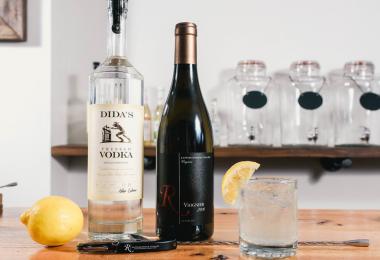Tourism is big business. While destinations from Bangkok to Bath are recording unprecedented growth in visitor numbers, Portugal now rivals great destinations such as Barcelona, Santorini and Venice as one of Europe’s most popular holiday spots. At the World Travel Awards, the Oscars of the industry, Portugal won Europe’s Leading Destination in 2018 and 2017, World’s Leading Destination in 2017, and a host of other accolades including Europe’s Leading Tourist Board four years in a row. It scores high as a golf destination too.
While Lisbon wins in terms of value, when it comes to visitors, Porto and the Douro are unsurpassed. The lovely town of Porto, which sits at the mouth of the great Douro River, is served by a medium-sized airport, Francisco Sá Carneiro, through which a record 10m passengers passed in 2017.
Wine tourism is a niche within this boom, growing thanks to visitors keen to traipse through the vineyards and taste the wine. “Wine tourism in general has increased over the last decade, with visitors nowadays more likely to visit a winery at some point during their holiday compared to ten years ago,” says Caron Fanshawe of the high-end wine tour operator Arblaster & Clarke.
Government encouragement
That tourists are flocking to Portugal is not simply due to the country’s natural beauty and friendly people. When the debt crisis hit Portugal, resulting in high unemployment and a lacklustre economy, one bright spot seemed to be tourism. Since 2014, the government has considered tourism of strategic importance and has set out to add as much value to the sector as possible. It has launched a range of initiatives, including its Tourism 4.0 strategy, to help create a culture of tourism entrepreneurship. Turismo Portugal, for example, offers financial incentives to start-up operators, including marketing and mentoring services, and is working to attract international investment.
Portugal has more than just an abundance of beaches, history and a business-friendly economy. It’s also, so far, not suffered from the terrorist attacks or political unrest that have plagued other major European destinations. All of this means that tourism is thriving: more frequent flights are on offer from low-cost carriers, attracting an abundance of visitors, and hotel construction is booming. By the end of 2017, travel and tourism had added an extra €33.5bn ($39.3bn) to the economy, accounting for 17.3% of GDP. By the end of this year, it could reach more than 20% of GDP.
The tourists pouring through the airports are also a changed breed. Where people were once content to head for the beach, modern travellers are now seeking experiential tourism, or an immersion in local culture. And this is a need that wine tourism can fulfil.
Port houses have been alive to the potential of wine tourism for decades, but it’s only relatively recently that they have been getting into the business themselves. One of the first big openings, in 2010, was the ultra-exclusive Yeatman Hotel above Vila Nova de Gaia, the historic port-shipping centre at the mouth of the Douro. The hotel, owned by the Fladgate Partnership (Taylor’s, Croft, Fonseca), comes complete with infinity pool, spa and a revolving bed in the presidential suite. There are many more such hotels, Six Senses Douro Valley, for example. “Oenophiles rejoice!” says the Mr and Mrs Smith website, promoting a retreat which “reconciles healthy living devotees with their inner hedonists”.
The local area is an obvious reason to stay: there are few regions on earth more lovely than the Douro Valley. This ancient landscape, of vertiginous terraces falling to the edge of a broad, tranquil river, is everyone’s dream of how wine should be produced. The vineyards of the Douro, on stony hills studded with white fincas painted with iconic names – Sandeman, Graham’s, Taylor’s – have an almost prelapsarian sense of oneness with the soil.
To take a boat up the Douro, eating a fine lunch of octopus washed down with a crisp white, and finished off with a glass from whichever old Port house is the host for the day, is a keen pleasure. As it’s one that more and more people want to experience, it’s not surprising that Portuguese wine companies have noticed the opportunity.
Sogrape, the giant Portuguese company which owns estates from Douro to Alentejo (including Sandeman, Mateus, Casa Ferreirinha and Offley), has taken a new and interesting route with the hostel it’s just opened in the old Sandeman building in Vila Nova de Gaia. The Sandeman Hostel is one of a series of innovative lodgings run by a Lisbon-based company called The Independente Collective. The brainchild of four half-brothers, most of them British educated, The Independente Collective specialises in turning old and disused buildings into a type of hostel-hotel they call “our own creative hospitality concept”.
The best way of describing the Sandeman Hostel is as a very upmarket student hostel. It’s in a wonderful position, the front rooms with French windows overlooking the port where – when Meininger’s visits – the wooden rabelo sailing boats are drawn up for the beginning of the annual regatta.
Inside, the décor is eccentric retro-chic. Old bicycles hang from a stairwell; an internal trellis supports a vine. The communal living area has big leather sofas and a wide-screen TV (the World Cup is on and a Portugal banner is tacked to the ceiling), there’s a good Indian carpet on the polished wooden floor, and magazines and books cover a big square coffee table. It’s a convivial, comfortable space.
Adjoining the hostel is the George restaurant, also owned by Sandeman. Its reputation for excellent, unfussy local food is well-deserved. “The Portuguese have always found most joy in spending a few hours round the table with friends eating and drinking,” The Independente’s founder and managing partner Bernardo d’Eça Leal says. “We try to get food and wine into the mix because that is key to experiencing the culture.”
The Independente Collective is a dynamic company turning over €6.5m and employing about 160 people. Its aim, d’Eça Leal says, is to reach €10m and 250 employees by 2020. Do the brothers have ambitions beyond Portugal? “Of course if we found the right partner, who shared our values and who would invest in expansion, then we would be open to suggestions.”
But at the moment he says that the tourism scene in Portugal has ample room for expansion. Douro – Porto and Vila Nova de Gaia – are “without doubt” the most exciting regions, and the brothers are discussing a project in the Douro with Sogrape, whose multiple estates have dozens of properties which are ripe for renovation.
Portugal has a double advantage when it comes to wine tourism; it already has a reputation as a reliable tourist destination and it produces a wide variety of wines in each of its diverse regions. From Vinho Verde in the north via Douro, Bairrada, the islands of Madeira and the Azores, Setúbal, Alentejo, and the Algarve, each has its own wine history. Lisbon itself is a (lesser-known) appellation.
For a company like Arblaster & Clarke, this presents a huge opportunity. Fanshawe told Meininger’s: “We will continue to feature the Douro but will also look further south to Bairrada and the Dao. In the Dao the number of independently owned quintas has increased hugely and they are now producing wines with clarity of fruit able to be drunk young. The Azores is producing some exciting wines from their native grape Verdelho on Pico Island and there is a renewed energy to pursue excellence rather than simply making wine as they had always done.”
Furthermore, Fanshawe says, as wine drinkers worldwide increasingly turn to lighter styles – aromatic whites like Grüner Veltliner and Albariño – “this has helped raise the profile of Portugal’s most well-known white wine, Vinho Verde”.
The boom in tourism has considerable knock-on effects for wine companies. Sandeman, one of the only Port houses to open its premises to the public, welcomed some 140,000 visitors a year. Its sister port houses Ferreira and Offley saw another 170,000 visitors between them in 2017.
For a Port house catering for what is always going to be a niche interest, such numbers represent a healthy (and growing) business. But they are part of a boom, and all booms have their downside.
Overtourism
According to Reuters, 12.7m people visited Portugal in 2017, spending €3.4bn. Lisbon attracted some 5m tourists: nine for every one of the city’s residents. In Albufeira in the Algarve, there were 39 tourists per resident; in Porto, eight visitors per resident.
There has been a spate of articles on what is seen as a growing problem for Porto. A recent article in Der Spiegel suggested “tourism has made local residents feel like foreigners”, citing the example of Porto’s famous bookshop Livraria Lello, which is so popular that visitors have to join a lengthy queue to buy a ticket to get in. If that sounds minor, consider this: in the past few years, anti-tourist demonstrations have taken place in popular destinations including Barcelona and Venice, while cities such as Dubrovnik and Rome have cracked down on the anti-social behaviour of tourists.
Wine tourism may be one solution to the problem, as it gets visitors out of overcrowded cities and into regional areas, bringing much-needed money and economic activity to the countryside. Companies like Arblaster & Clarke take this responsibility seriously.
“We are the world’s leading wine tour operator,” Fanshawe says. “We have to be responsible. Remember also that we don’t deal in mass tourism – we take perhaps 30 people to Porto in October, and we tend to stay up the Douro rather than in the town.”
D’Eça Leal predicts tourism will continue to grow in Porto and the Douro. “Douro is number one for sure. There is so much potential in Porto and Vila Nova de Gaia. Lisbon’s airport has reached its limit and so airlines are negotiating to move their flights to Porto, where the airport is very efficient, and has lots of space to grow.”
That’s not to say he wants to see masses of shuffling tourists taking selfies. From the beginning, the ethos of The Independente Collective has been to preserve the culture, and to show the hospitality of the Portuguese. They only employ local cooks in the restaurants, for example, “to cook simply and at reasonable cost,” d’Eça Leal says. “We want to show people a more genuine side of the country.”








